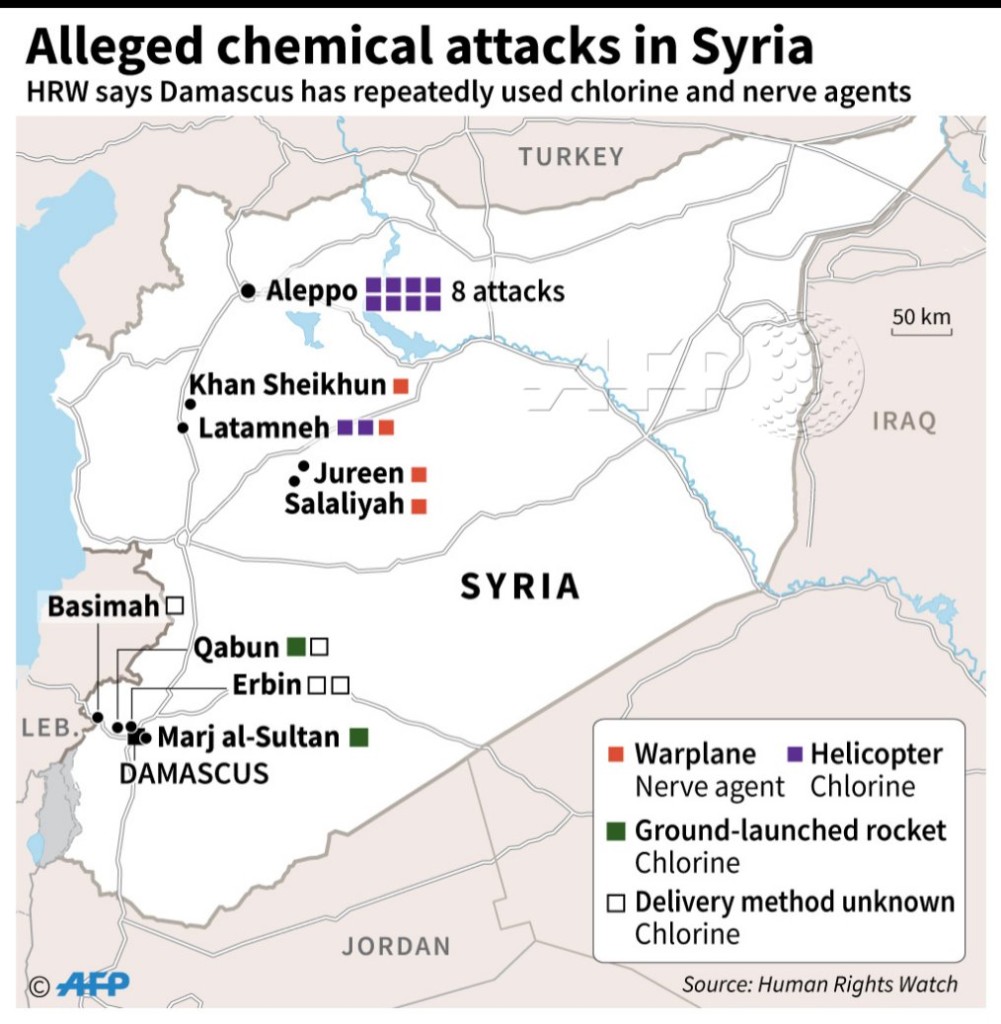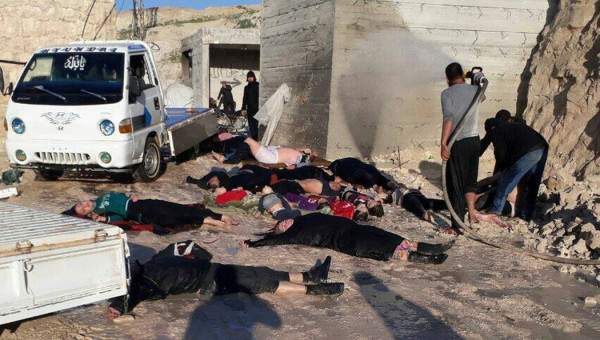Human Rights Watch has published a 48-page report setting out the Assad regime’s regular use of nerve agents in chemical attacks in the last five months.
The information is not only about the attack, by an Su-22 jet fighter firing a missile with “sarin or a sarin-like substance”, which killed at least 92 people and wounded almost 600 in Khan Sheikhoun in northwest Syria on April 4, but also three other incidents: two deadly assaults on ISIS-held territory in eastern Hama Provinced in December 2016, and one on northern Hama Province on March 30.
HRW notes that the deployment of the nerve agent is “part of a broader pattern of…use of chemical weapons” by the regime, “in some cases…directed against the civilian population”. The regime’s resort to “chlorine-filled munitions has become more systematic”, both via helicopter and through improvised ground-launched munitions. Areas attacked include parts of Idlib, Hama, and Aleppo Provinces and the Damascus suburbs.
Human Rights Watch interviewed 60 people with first-hand knowledge of the chemical attacks and their immediate aftermath. It reviewed dozens of photos and videos of impact sites and victims, although it was unable to conduct ground investigations of the attack sites.
In the case of Khan Sheikhoun, the evidence reinforced the explanation of the Su-22 warplane dropping a bomb which caused no large explosion but detonated to send smoke and dust rising from the area, consistent with the relatively small explosive charge in a chemical munition. A few minutes later, another warplane dropped three or four high-explosive bombs on the town.
The remnants from the chemical weapon indicate it is or is similar to a Soviet-made KhAB-250 munition, specifically designed for the use of sarin.
Because the northern Hama attacks on December 11 and 12 were in territory controlled by the Islamic State, they are almost unknown. However, four witnesses and two medical personnel interviewed via text message through intermediaries gave consistent accounts of nerve agent attacks. An opposition-affiliated activist and local residents provided the names of 64 people who died from chemical exposure.
The suspected nerve agent attack in northern Hama on March 30 caused no deaths but injured dozens of people, both civilians and rebels, according to local residents, medical personnel, and first responders.
TOP PHOTO: Victims of the Assad regime’s nerve-agent attack on Khan Sheikhoun, April 4, 2017

